World Expenditures
| Deadly Priorities
| U.S. Expenditures |
Military Burden and Productivity
| The Defense Business | Third World Development
| The Great Double Act | Threat Inflation
| Governments that Kill ...
| And Those Who Help Them
"The problem in defense spending is to figure how far you should go
without destroying from within what you are trying to defend from without."
U.S. President Dwight D. Eisenhower April 16, 1953
World Expenditures
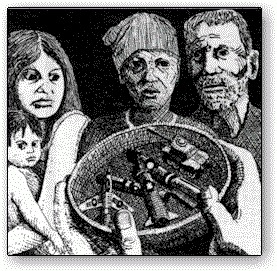 |
- In 1986 which was the International Year of Peace global military expenditures reached $900 billion or $1.7 million a minute.
- Enough nuclear weapons are scattered over the globe to
kill everyone on earth at least 12 times.
- Globally, the permanent military bureaucracy outnumbers all other public
employees and administers the largest share of government revenues. With a global
procurement budget exceeding $250 billion annually. The military component of government
has a powerful constituency in the economy.
World Military and Social Expenditures |
Deadly Priorities
"Every gun that is made, every warship launched, every rocket fired, signifies in the final sense a theft from those who hunger and are not fed, those who are cold and are not clothed."
U.S. President Dwight D. Eisenhower April 16, 1953
Every government makes choices about how to spend it's money.
Comparing the amount spent on arms with that spent on health care indicates current global
priorities.
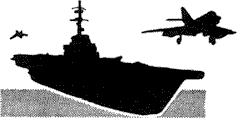 |
The U.S. spends $215 million a year to operate one aircraft carrier |
 |
This is more than the amount spent on health in 1982 by 12 West African countries
combined. |
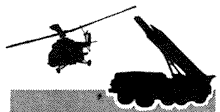 |
The U.S.S.R. spent $170,000 million on the military in 1982. |
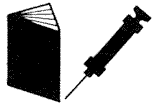 |
This was
more than the entire Third World spent on education and health care in the same year |
|
U.S. Expenditures
- One third of all US research and development funds are spent for military
purposes. Seventy percent of the federal government's research and development funds go to
the military. Military research and development spending grew 164% from 1980 to 1987.
Centre for Defense Information
- From 1945 to 1986 price increases of 300-400 times
have not been uncommon for weapons systems performing the dame basic function as
previously(e.g. a tank destroyer or transport plane). Cost escalation at this rate is
equivalent to a price today of $300,000 for the average family size car costing $1000
forty years ago.
World Military and Social Expenditures
- A Minuteman II machine screw cost $1.08 in 1982 and $36.77 in 1983 - an
increase of over 3300 percent.
- The 1982 US budget called for $102.1 million to be
spent on military bands - $9 million increase over two years . Only 11 million was spent
for the National Endowment for the Arts and for local operas, symphonies, chamber
orchestras and other musical programs - a decrease of 12%.
Missle Envy
Military Burden and Productivity
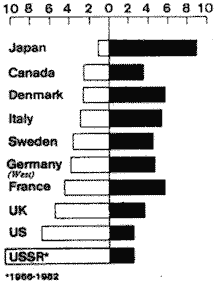 |
1960 - 1983 Military expenditure - percent of GNP / Manufacturing productivity. Annual rate of growth |
The Defense Business
- If the US military industry were a national economy, it would be the 13th
largest in the world. Ten giant military contractors account for 1/3 of all US weapons
contracts.
- Military contractors receive higher profits for lower
risk work the comparable commercial business . Top contractors are heavily subsidized by
the tax payer, using nearly $40 billion worth of government property free of charge,
including: $15 billion in material,$9 billion in equipment, $16 billion in land buildings
and other property.
- The top 10 firms account for 1/3 of the Pentagon's sales; the top 25
account for 50% of all Pentagon contracts. 6 major aerospace firms are dependent on the
government for at least 60% of their sales.
- 59 of the top 100 contractors were under
investigation by 1987 and the number of contractor suspensions and disbarments doubled
from 1984 to 1986.
Defense Monitor
Third World Development
- Arms imports of developing countries between 1975 and 1985 amounted to
40% of the increase in their foreign debt in that period.
- Third World military expenditures in constant prices have
increased six-fold since 1960 and unemployment has increased eight-fold.
- Over the 20 years period ending in 1983 total arms exports to the
developing countries according to official US estimated amounted to $223 billion in
current prices. The US & NATO allies accounted for almost half of this trade (the US
alone for 28% ) and USSR and its Warsaw Pact allies for another 36% (the USSR alone for
33%).
- Since 1960 Third World Military expenditures in
constant dollars have increased 5.3 times, their aggregate GNP 3.4 times and per capita
2.0 times. The disparity shows in a mountain of debt and hundreds of millions of people
still deprived of the basic necessities of life.
World Military & Social Expenditures
- 52 of 114 third world nations could be accused of state terrorism. State
terrorism, directed mostly at political opponents kills thousands every year, and leaves
many more psychologically damaged. Denied human rights these victims face arbitrary
arrest., detention without trial torture and death.
New Internationalist 7/86
The Great Double Act
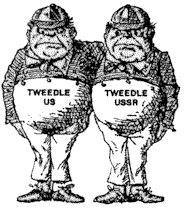 |
The United States and Soviet Union have just 11% of the world's people.
But they spend more than half the world's military budget, perform 80% of its military
research, account for 53% of its arms exports - and possess 97% of its nuclear weapons. In addition, of the 1.8 million soldiers stationed on foreign soil around the globe, 69%
come from the USSR and the US. |
Every time one of the superpowers develops a new weapon, the other is obliged to follow
suit as soon as possible.
New Internationalist
Threat Inflation In the age of nuclear-speak the numbers game has always been the biggest
game in town. No one wants to lose the "nuclear edge" to the opponent. The
Russians are close-mouthed about this, as they are gaps that haunt their nightmares. There
is a season of the year, called budget-time, when gaposis is especially virulent. Herewith
a few case histories.
- In the 1950's it was the "Bomber Gap."
The fear was that the Russians would have 600-700 long-range bombers by 1960.
What they actually has by then was 190 . Throughout the life of the gap, the US apparently
always has a superiority of at least 300 bombers.
- In the 1960's , the "Missile Gap."
The USSR was expected to have 500-1,000 intercontinental ballistic missiles by 1961
Later it developed that what they actually had then were 10.
- And the "ABM Gap."
The USSR was expected to have by the early 1970's 10,000 interceptors in a nationwide
anti-ballistic missile (ABM) system.
The actual count proved to be 64 interceptors and essentially a defense against bombers
rather than missiles.
- In the 1970's, the "Hard-Target-Kill
Gap".
New Soviet missiles, the SS-19 in particular , were judged accurate enough to destroy all
US land-based missiles.
Assessments in the 1980's found this unrealistic for several reasons; among them , the
SS-19 was found to be less accurate than originally gauged by more than one-third.
- In the 1980's, the "Spending Gap."
An unrestrained growth in Soviet military spending, plus the presumed danger to the
ICBM's. had opened a "window of vulnerability" in US defenses.
A CIA re-reassessment in 1983 showed that Soviet procurement had leveled off during
1977-81 and that the increase in overall spending was half earlier projections.
- And the "Laser Gap"
The USSR could deploy nuclear-powered X-ray lasers without further testing, while the US,
behind in the technology, required nuclear tests.
In response to a Congressional inquiry in 1986, CIA stated that it did not believe the
Russians could deploy the weapons without additional tests.
Governments that Kill ...
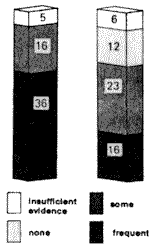
|
Military Governments - number 57 / Other governments - also number 57
Official Use of state violence against citizens in the Third World ( 1985 )
|
And Those Who Help Them
From 1975 - 83 more than two-thirds of the arms exported to the Third World
went to regimes using violence as a matter of policy. The main suppliers to these
terrorist governments are the United States, the U.S.S.R. and France. |
 |
Since 1981, the U.S. financed contra war against Nicaragua's Sandinista government has
resulted in 12,000 deaths, 6,000 orphaned children and 250,000 displaced from their homes.
American aid to Central America has risen 2,000% since 1978: In 1985 70% of it went for
'security purposes' - military aid and police training to combat 'terrorism'. Produced by the Office on Global Education, National Council of Churches,
2115 N. Charles St., Baltimore, MD 21218-5755 A program of the Divisions of Education and Ministry, and Church World Service
Sources:
- A Children's Defense Budget, 1986 Children's Defense Fund, 122 C Street
N.W. Washington D.C. 20001.
- The Defense Monitor, Vol. CVI No. 3 and Vol CVI No. 4 1987 Center for
Defense Information, 1500 Massachusetts Avenue, N.W. Washington D.C. 20005.
- In Defense for Creation: The Nuclear Crisis and a Just Peace, 1986 The
United Methodist Council of Bishops Graded Press 201 Eighth Avenue, South. P.O.Box 801
Nashville Tennessee 37202.
- Hunger & Militarism: A Guide to Study Reflection and Action, World
Hunger/Global Development Program, American Friends Service Committee, 15 Rutherford
Place, New York, N.Y. 10003.
- Missile Envy, Dr. Helen Caldicott, 1986, Bantam Books, New York.
- The New Internationalist, No. 161 July 1986 and No 163 September 1986,
175 Carlton Street, Toronto Ontario, M%A 2K3. For subscription enquiries, P.O.Box 255 ,
Lewiston NY 14092.
- World Military and Social Expenditures, Ruth Leger Sivard, World
Priorities Inc, Box 25140, Washington D.C. 20007
|